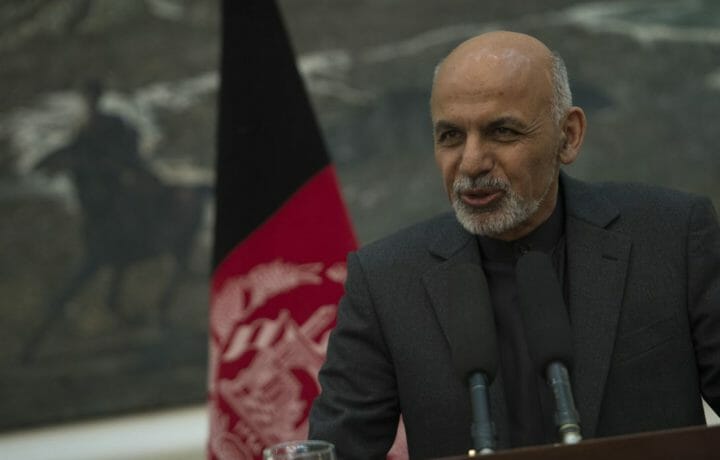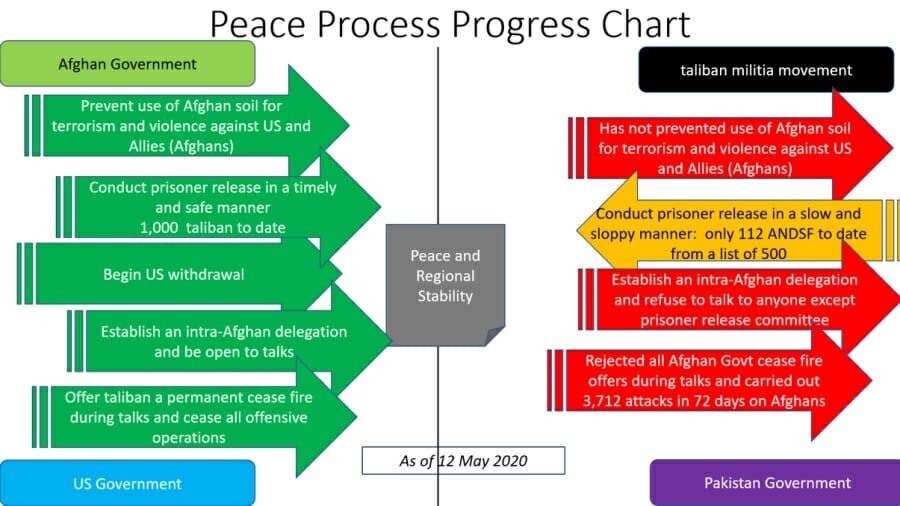There has been a lot of information, misinformation, and lies flying around about the Afghan peace process since February 29, when it received a boost with the Kabul announcements between the US and the Afghan government, followed by the Doha agreement between the U.S. and the Taliban militia movement. After the terrorist massacre of Afghan infants and mothers in Kabul, we must ensure that everyone understands the peace process and who is following it.
If you have not taken time to read the stories of the families attacked in the Kabul hospital, please do so. This incident should not be quickly forgotten in our busy lives. Mark this event in your mind.
Remember that the February 29 events are just one part of a long Afghan government owned/led peace process that stretches back to the summer of 2009 and the Afghan and international community policy changes that made room for a peace process. I’ve written about this history before. You need to understand that history to process current events correctly.
The February 29 events were designed to set the stage for possible Afghan government-to-Taliban movement direct talks. You can read about this path to peace in more depth here.
A typical peace process takes many years, even decades, to reach an acceptable level of stability and security. I have been reiterating, since my involvement began in Summer 2009, that Afghanistan will be no different. There will be fits and starts, stoppages, reverses, and re-starts.
That is NORMAL
Don’t lose sight of the long-term goals.
Now we wait and watch, and see which side is actually working towards peace and which is working towards death. The recent day’s slaughter of innocents and the continuing Taliban movement violence since February offers a pretty clear view of what the Taliban and their terrorist allies prefer.
Here is a simple score card I have developed to see who is following the peace process. This version ends its assessment on May 12. I will continue to update this device over time so you can quickly see the score. As per most charts, the arrows represent movement, green is positive, yellow is middling to poor, and red is negative. The goal, of course, is in the center of the scorecard: “Peace and Regional Stability.”
The world should continue to pressure both sides to move forward on the peace process path, but should exert extra pressure on the side that is failing to move forward…and any nation (like Pakistan) that is passively or actively supporting the violence and anti-peace activities.
After the terrorist war crime against the maternity ward in Kabul the Afghan government has, predictably, moved their security forces from the defensive mode to the offensive mode. If the Taliban won’t lift a finger to stop other terrorists, or stop their own butchering of Afghan women and children, it shouldn’t surprise anyone that the Afghan government is going to step in to protect its citizens.
Continue watching, supporting the forces for peace in the region, and fairly assessing who really wants peace to take hold. Remember peacebuilding is a process, not an event that happens in a day. Decades of reconciliation lie ahead for Afghans; and for many forgiveness will be harder than war.
The best way nations outside Afghanistan can help is to push all combatants and their supporters towards peace, give the Afghan government resources that create stability, and plan ahead to give even more resources after the peace process achieves stability. It is after the peace takes hold that resources will be needed the most.





